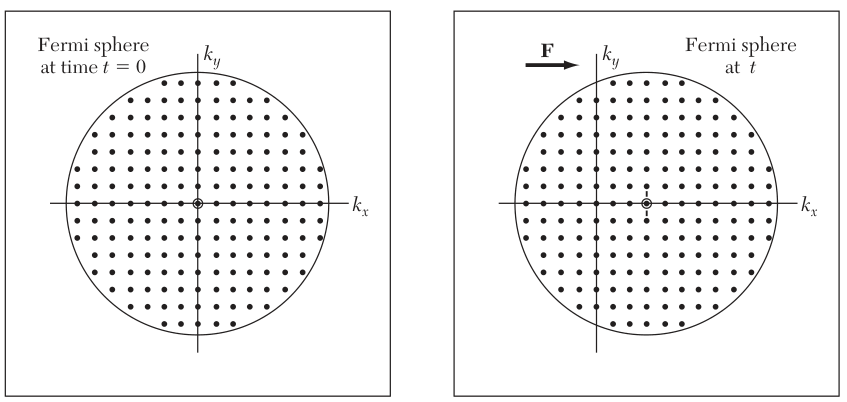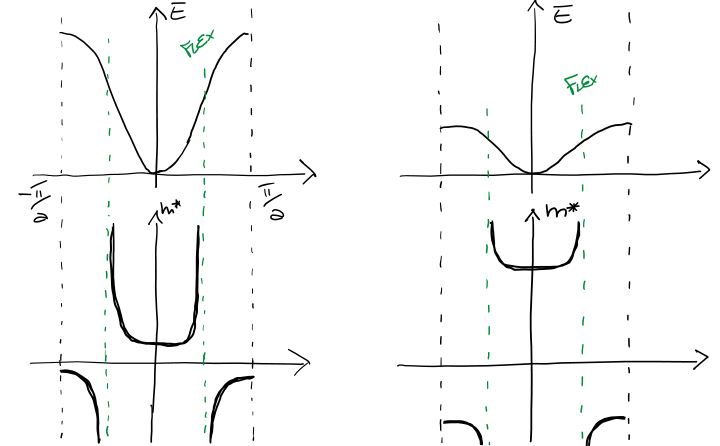Fermi surfaces
The Fermi surface is the surface of constant energy
Current transport in solids
todo add drawing
The current density is given by
If
From the relation above we can write
or, in vector format
Electrical conductivity for free electrons
Kittel, Chapter 6, "ELECTRICAL CONDUCTIVITY AND OHM’S LAW"
In the case of a free electron
If we ignore the effect of the magnetic field (
which, integrating over
If at

Since the electrons will collide with impurities, lattice imperfections and phonons, their momentum will not grow indefinitely.
If we call
which represents how much the sphere is translated when the force is applied (picture above on the right).
The incremental velocity of the electrons can thus be written as
So, going back to the current density
which is Ohm’s law.
The electrical conductivity
can be understood intuitively considering the following things:
- We expect the charge transported to be proportional to the charge density
. - The factor
is given by the fact that the acceleration in a given electric field is proportional to and inversely proportional to . - The time
describes the free time during which the field acts on the carrier.
Semiclassical description
For a more accurate description we would need to solve the the time dependent SE (which is complex to do). So we describe the electrons as wavepackets: linear combination of plane waves with a wave vector in the interval
where
The mean motion of the wavepacket is given by the group velocity
Since we are in a crystal, the wavepacket is formed by the combination of Bloch states (called Wannier functions). The electrons velocity will be given by the group velocity of the Bloch wavepackets (todo why is this true?):
In this case
If we now want (todo why should we want to) to calculate the acceleration along the i-th direction we get
We can rewrite
By substituting this in
Finally, we get
Effective mass tensor
When the effective mass doesn’t change depending on the direction, it can be written as
which shows that the effective mass is related to the curvature of the dispersion relation.
todo improve plot

Current inside an energy band
Full band
The electron density associated with a volume
and the current density is
To evaluate the total current density we need to integrate on the 1st BZ:
Since
todo page 22 bianco: why calculating the velocity
Partially filled band
In case the band is not full, the electric field can change the electron’s momentum, which means that the distribution of
In this case
Similarly to before,
This means that the current density in a partially filled band can be seen as if it was due to positive charges (holes) in the band.
